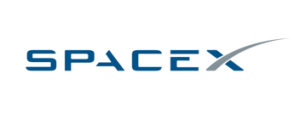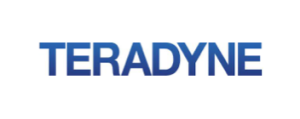6 signs you’re trapped by your sensor vendor
In today’s IoT-driven world, sensors are the backbone of countless industrial operations, smart buildings, and monitoring systems. While partnering with a sensor vendor can accelerate your deployment and provide technical expertise, it’s possible to become overly dependent on a single provider. As Microsoft’s Industry Blog confirms, “vendor lock-in occurs when businesses build IoT systems that rely heavily on proprietary tools, APIs, or protocols provided by a single vendor.” This dependency can stifle innovation, inflate costs, and limit your operational flexibility.
Here are six critical warning signs that your organization may be trapped by your sensor vendor—and what you can do about it.

1. You can’t access your own data without their platform
The warning sign: Your sensor data flows exclusively through your vendor’s proprietary platform, dashboard, or API. You cannot directly access raw sensor readings or export historical data without using their tools or paying additional fees.
Why it’s problematic: Your data is one of your most valuable assets. When you can’t access it independently, you lose control over how you analyze, store, and use that information. This dependency makes it nearly impossible to switch vendors or integrate with other systems.
What to look for:
- Data export requires special requests or incurs extra charges
- APIs are limited or vendor-specific with no standard protocols
- Historical data becomes inaccessible if you stop paying platform fees
- Integration with third-party analytics tools is restricted or impossible
2. Proprietary communication protocols lock you in
The warning sign: Your sensors communicate using proprietary protocols that only work with your current vendor’s infrastructure. Standard protocols like Modbus, MQTT, Serial (COM), USB or LoRaWAN are nowhere to be found.
Why it’s problematic: Proprietary protocols create artificial barriers to switching vendors or expanding your system with sensors from other manufacturers. As noted in educational research on IoT systems, “if proprietary data protocols are used between device and cloud service, then users may be tied to a specific cloud service, limiting or preventing the use of alternative service providers.” This limits your ability to choose best-of-breed solutions and often results in higher long-term costs.
Red flags include:
- Custom communication protocols with no open documentation
- Inability to connect sensors to third-party gateways or data collectors
- Vendor claims their “unique” protocol is superior to industry standards
- No migration path to standard protocols
3. Escalating costs with no clear value proposition
The warning sign: Your sensor-related expenses continue to grow—through platform fees, data storage charges, support costs, or mandatory upgrades—without corresponding improvements in functionality or value.
Why it’s problematic: Vendor lock-in often enables price increases because switching costs are high. You may find yourself paying premium prices for basic functionality that competitors offer at lower rates.
Watch out for:
- Annual price increases that exceed inflation or market rates
- New fees for previously included services
- Forced upgrades to maintain basic functionality
- Per-sensor or per-data-point pricing that scales exponentially

4. Limited integration and customization options
The warning sign: Your vendor restricts your ability to customize sensor configurations, integrate with existing systems, or work with third-party developers. Everything must go through their approved channels.
Why this limits you: Modern sensor deployments need flexibility to adapt to changing business requirements. Vendor restrictions on customization and integration prevent you from optimizing your system for your specific needs.
Common restrictions:
- Cannot modify sensor sampling rates or alert thresholds
- Third-party integrations require vendor approval or additional licensing
- Limited API access prevents custom application development
- Firmware updates are controlled exclusively by the vendor
5. Lack of clear exit strategy or data portability
The warning sign: When you ask about migrating away from their platform or transitioning to a different vendor, you’re met with vague responses, high switching costs, or claims that your data cannot be easily transferred.
The reality check: A confident vendor that provides genuine value will have clear documentation about data export, system migration, and interoperability. Reluctance to discuss exit strategies often indicates they rely on lock-in rather than value to retain customers.
Red flags:
- No documented data export procedures
- Claims that historical data cannot be transferred
- Excessive termination fees or long-term contract requirements
- Lack of documentation for system configuration and setup
6. The recalibration trap: vendor-controlled maintenance
The warning sign: Your sensors require periodic recalibration for regulatory compliance or performance maintenance, but this can only be done through your vendor’s proprietary process, requiring expensive on-site visits or sending equipment back to the manufacturer.
Why this is costly: What Dracal Technologies calls the “recalibration trap” occurs when manufacturers neglect “during product development, that the environmental sensors within it will need to undergo recertification and recalibration, and this, on a regular basis.” This oversight can dramatically increase total cost of ownership and create ongoing operational dependencies.
The hidden costs:
- Annual on-site recalibration visits that can cost 5-10 times more than laboratory recalibration
- Extended downtime while equipment is sent away for recalibration
- Complete dependence on vendor schedules and availability
- No ability to use alternative ISO17025 accredited calibration laboratories
- Inability to maintain spare sensors for instant replacement
What true independence looks like: True independence means you own your data completely—you can access it, export it, analyze it with any tools you choose, and take it with you if you switch vendors. You’re free to integrate with multiple platforms, use standard protocols that work with any system, and make changes without vendor approval. Most importantly, you can walk away at any time without losing your historical data or facing prohibitive switching costs.
For the specific case of recalibration, independence means having physical modularity where sensors can be “easily replaced by the end user” with “no screwdriver, no wiring intervention, and no data manipulation,” and service flexibility where “any ISO17025 accredited laboratory with the competence to perform the recalibration task” can maintain your equipment.
Breaking free: your path forward
If you’ve identified one or more of these warning signs, don’t panic. Here are practical steps to regain control:
Immediate actions:
- Audit your current contract terms and identify potential exit costs
- Document all data flows and integration points
- Research alternative vendors that support open standards
- Begin requesting raw data exports to assess data portability
Long-term strategy:
- Advocate for open protocols in future sensor deployments – Microsoft highlights that “OPC UA is endorsed by over 800 companies, including the top seven automation companies and the top three cloud providers” as a proven alternative to proprietary systems
- Implement hybrid approaches that reduce dependence on any single vendor
- Negotiate better terms that include data portability guarantees
- Build internal expertise to reduce reliance on vendor-specific knowledge
Prevention for future projects:
- Prioritize vendors that support industry-standard protocols like Modbus, MQTT, OPC-UA, Ethernet/IP, Serial (COM) and USB.
- Ensure data ownership and export rights are clearly defined in contracts
- Plan for multi-vendor scenarios from the beginning – as Buildings magazine notes, “proprietary software and protocols that lead to vendor lock-in are eliminated” when using open-source technologies with “REST API capabilities”
Regular vendor performance and cost reviews

A positive example: solutions that eliminate lock-in
Some sensor manufacturers are actively designing their systems to prevent vendor lock-in. For example, Dracal Technologies’ Modular Instrument Integration (MII) solution demonstrates how OEMs can “effortlessly integrate portable high-precision instruments into their products and solutions” while maintaining complete .
Their approach addresses multiple lock-in concerns simultaneously:
Data and calibration independence: The 3-Point User Calibration feature allows “end-users to take full control of their calibration requirements with seamless instrument replacement, zero downtime, and the freedom to choose their preferred ISO17025 calibration laboratories.”
Integration freedom: The Virtual COM Communication feature enables “robust, simple, and third-party-free integration of precision instruments in minutes with available sample copy-and-paste code banks.”
Open integration: Rather than proprietary APIs, they provide “ready-made code examples in many programming languages, ensuring integration times of less than one hour” with standard communication protocols.
Recalibration independence: Their modular USB design means sensors can be easily removed and sent to any qualified ISO17025 laboratory for recalibration, eliminating the expensive on-site recalibration trap that affects many industrial products.
This demonstrates that sensor vendors can provide sophisticated, high-precision solutions without trapping customers in proprietary ecosystems.
The bottom line
Vendor partnerships should enhance your capabilities, not constrain them. While working closely with a sensor vendor can provide valuable expertise and support, maintaining your independence and flexibility is crucial for long-term success.
The best sensor vendors understand that their value comes from superior products, excellent service, and ongoing innovation—not from making it difficult for you to leave. If your current vendor relationship feels more like a trap than a partnership, it may be time to explore your options.
Remember: your sensor infrastructure should serve your business goals, not your vendor’s revenue targets. By recognizing these warning signs early and taking proactive steps, you can maintain the flexibility needed to adapt, grow, and thrive in an ever-evolving technological landscape.
Not sure if your project will benefit from Dracal’s solution?
Contact us, tell us about your project, and we’ll quickly determine if there’s a fit.
"*" indicates required fields
PRODUCTS YOU CAN TRUST
Approved by engineers, scientists and researchers around the world.
Thousands of companies trust our products worldwide:











